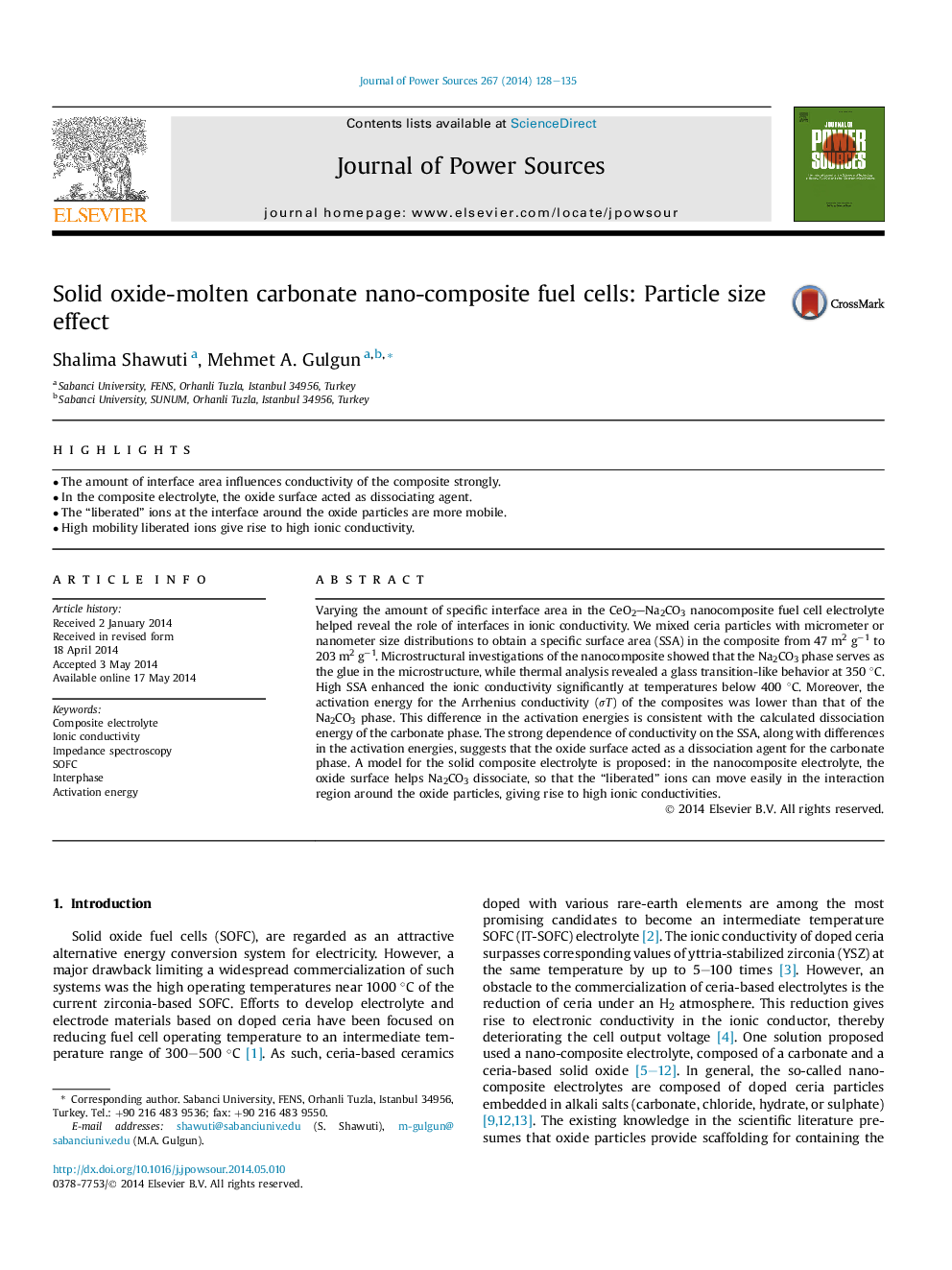| کد مقاله | کد نشریه | سال انتشار | مقاله انگلیسی | نسخه تمام متن |
|---|---|---|---|---|
| 1286575 | 1497965 | 2014 | 8 صفحه PDF | دانلود رایگان |
• The amount of interface area influences conductivity of the composite strongly.
• In the composite electrolyte, the oxide surface acted as dissociating agent.
• The “liberated” ions at the interface around the oxide particles are more mobile.
• High mobility liberated ions give rise to high ionic conductivity.
Varying the amount of specific interface area in the CeO2–Na2CO3 nanocomposite fuel cell electrolyte helped reveal the role of interfaces in ionic conductivity. We mixed ceria particles with micrometer or nanometer size distributions to obtain a specific surface area (SSA) in the composite from 47 m2 g−1 to 203 m2 g−1. Microstructural investigations of the nanocomposite showed that the Na2CO3 phase serves as the glue in the microstructure, while thermal analysis revealed a glass transition-like behavior at 350 °C. High SSA enhanced the ionic conductivity significantly at temperatures below 400 °C. Moreover, the activation energy for the Arrhenius conductivity (σT) of the composites was lower than that of the Na2CO3 phase. This difference in the activation energies is consistent with the calculated dissociation energy of the carbonate phase. The strong dependence of conductivity on the SSA, along with differences in the activation energies, suggests that the oxide surface acted as a dissociation agent for the carbonate phase. A model for the solid composite electrolyte is proposed: in the nanocomposite electrolyte, the oxide surface helps Na2CO3 dissociate, so that the “liberated” ions can move easily in the interaction region around the oxide particles, giving rise to high ionic conductivities.
Journal: Journal of Power Sources - Volume 267, 1 December 2014, Pages 128–135
